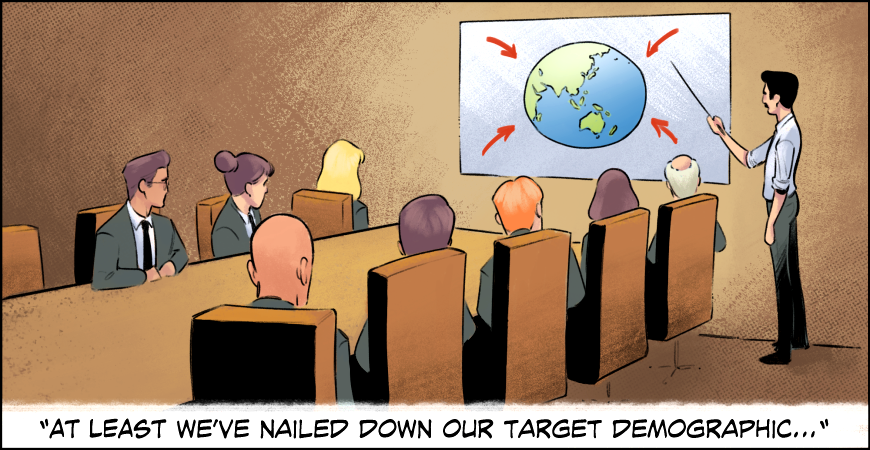You might have the best product in the world, but if it doesn’t excite, or it is not widely trusted then it probably won’t go very far.
In the case of the public communication around COVID-19 vaccines, national governments have attempted a range of approaches informed and shaped by the cultures and political climate they were produced in.
Each one of these approaches uses a combination of emotion, logic and authority – the three types of rhetorical persuasion – to various degrees of success.
Australia’s efforts have been the subject of some criticism, but how effective is our vaccination campaign compared to well-received adverts from around the world?
To find out, I’ll present some notable vaccine ads and examine the correlation between their release and vaccination rates using figures from Our World in Data.
AUSTRALIA
There have been three main adverts circulating in Australia as part of the Federal Government’s vaccination campaign: the ‘Café’ ad, the ‘Arm Yourself’ ad and the ‘Severe COVID’ ad.
The 'Café' ad is a simple explainer ad featuring Dr Nick Coatsworth, which calls on the community spirit of Australians.
It is authoritative and informative, but it lacks impact.
The ‘Arm Yourself’ ad series has a more direct call to action, but the choice to hide the faces of the people featured means it’s difficult to form an emotional connection.
The same cannot be said for the ‘Severe COVID’ ad, which borrows heavily from the anti-smoking playbook by showing the grim reality of severe COVID-19.
It is highly impactful, but it has been criticised because the age bracket targeted by the ad were not yet eligible to receive a Pfizer COVID-19 vaccine and health advice at the time was not pushing for young people to get AstraZeneca.
As of August 1, 33 per cent of Australians have received at least one dose of the vaccine, with only 15.3 per cent fully vaccinated.
According to the Melbourne Institute, vaccine hesitancy is falling with 11.8 per cent of Australian adults remain unwilling to get vaccinated, compared to 18 per cent at the end of May.
With some of this being driven by outbreaks in NSW, Victoria and Queensland, it’s too early to judge the overall effectiveness of the advertising to date.
SINGAPORE
The Singaporean Government took a more upbeat approach to its campaign, recruiting beloved comedian Gurmit Singh to perform a pop song as his popular character Phua Chu Kang.
The two-minute song is catchy, and features ‘Uncle Phua’ countering the many concerns of fellow character ‘Rosie’. A playful and engaging way to attempt to sell the vaccine using logic.
When the ad launched on May 2, 31.7 per cent of Singaporeans had received at least one vaccine dose, with 22 per cent fully vaccinated.
As of July 31, 73.6 per cent of Singaporeans have received at least one dose of a COVID-19 vaccine, with a staggering 58 per cent being fully vaccinated.
While the ad can’t claim all the credit, it certainly played a role in achieving such an impressive outcome.
FRANCE
The French offering released on June 9 tried to sell people on the message of freedom by juxtaposing people receiving jabs to iconic French locations opening their doors again.
The emotional and uplifting ad communicated a clear way forward by relying heavily on imagery, not words.
On the day the ad was released, 43.5 per cent of the French population had received one dose of the vaccine and 20 per cent were fully vaccinated.
As of August 1, 60.3 per cent of France’s population has received at least one dose, with 46.3% fully vaccinated.
To more than double the proportion of fully vaccinated individuals in just under two months is an impressive outcome, no doubt impacted by the public health campaign.
NEW ZEALAND
New Zealand’s ‘Ka kite, COVID’ ad ticks a lot of boxes: it’s funny, upbeat, and appeals to a range of demographics at once.
Instead of addressing the negatives narratives around COVID-19 vaccines, it focuses on the positive outcomes of vaccinations.
When the ad was released on May 3, only 4.4 per cent of New Zealanders had received at least one dose, with less than two per cent fully vaccinated.
The most recent data from the end of July shows that 22 per cent of the New Zealand population has received one dose, with 14.5 per cent now fully vaccinated.
Like Australia, New Zealand has struggled with vaccine supply, which has delayed a nationwide rollout and while the ad was excellent, the mostly younger demographics it targeted have been unable to access the vaccine.
LESSONS
The French and Singaporean campaigns could not have been more different, but both suited their context and have proven effective.
The lesson here is that there is no universal approach to public health campaigns, and different strategies can be successful in different markets.
New Zealand and Australia have taken different approaches but encountered the same obstacle that was unrelated to the quality of the campaign.
Both launched different, but impactful, campaigns targeted at populations that were unable to access the vaccine.
The lesson here is that it doesn’t matter how great the ad is if you can’t deliver the product.
The Federal Government has addressed criticisms of its vaccination ads by saying each was deployed strategically and it had others ready for different phases of the rollout.
With the supply of Pfizer increasing, the true test of Australia’s campaign is just beginning.
 ReGen Strategic
ReGen Strategic